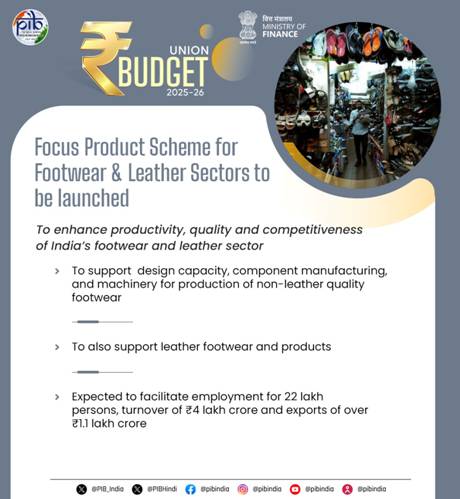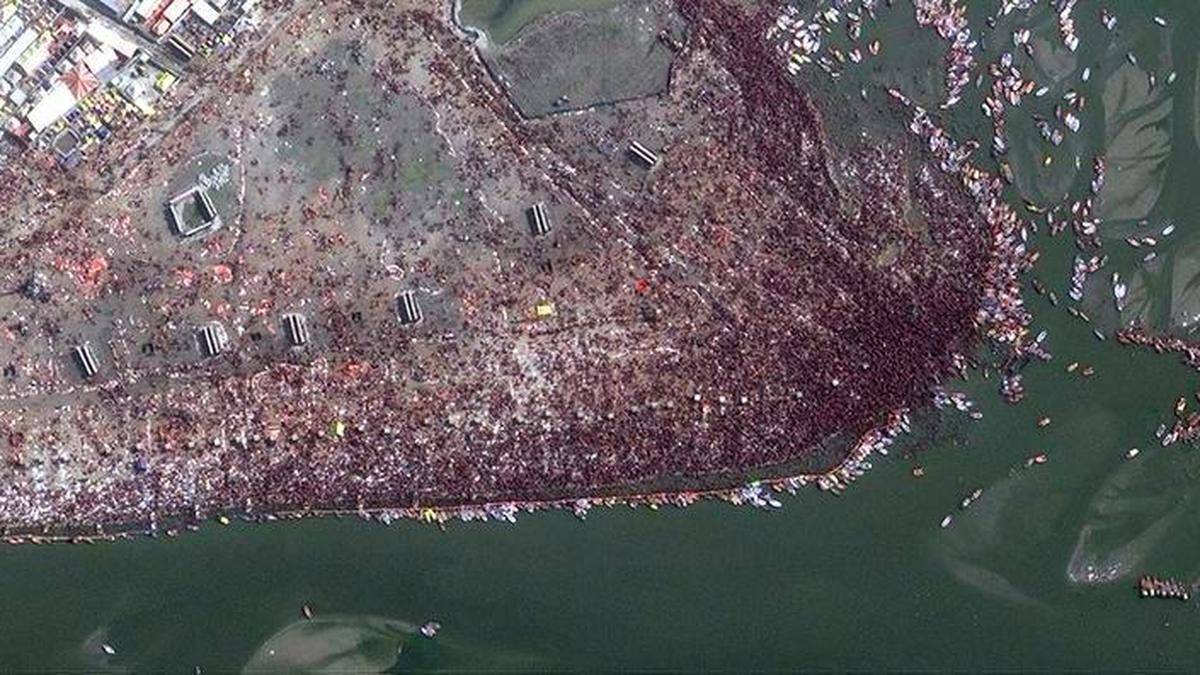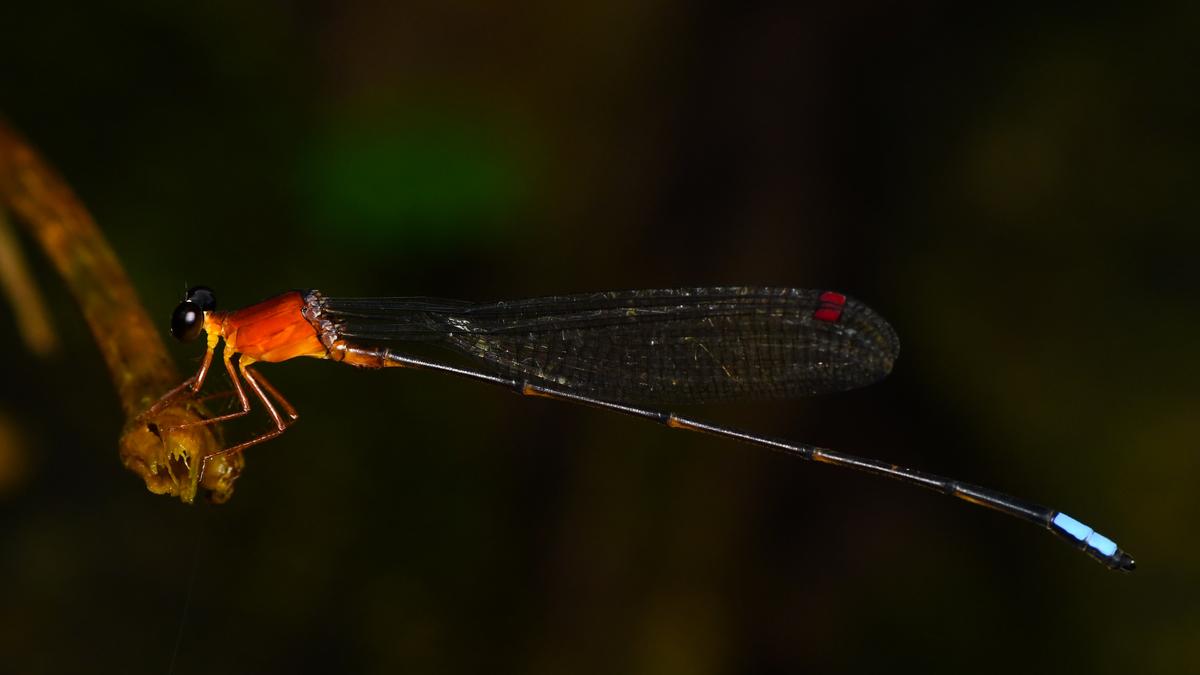National Manufacturing Mission

- 02 Feb 2025
In News:
- The National Manufacturing Mission (NMM) has been launched to accelerate India’s transition into a global manufacturing hub.
- This mission is a key component of the Make in India initiative and aims to raise the manufacturing sector’s contribution to GDP from 17% to 25% by 2025.
Scope & Coverage
- Targets small, medium, and large industries across sectors.
- Provides a comprehensive support framework involving policy guidance, execution roadmaps, and governance structures for central ministries and state governments.
Five Core Focus Areas:
- Ease and cost of doing business
- Skilling for future-ready jobs
- Support for a dynamic MSME sector
- Technology availability and innovation
- Enhancement of product quality
Clean Tech Manufacturing Focus
In line with India's sustainable development goals, the mission will promote domestic value addition and build robust manufacturing ecosystems for:
- Solar PV cells
- Electric vehicle (EV) batteries
- Motors and controllers
- Electrolyzers
- Wind turbines
- Very high-voltage transmission equipment
- Grid-scale batteries
Strategic Objective: Reduce reliance on Chinese imports and integrate India into global clean tech supply chains.
MSME Sector Support
- Credit Guarantee Cover for MSMEs increased from ?5 crore to ?10 crore.
- Revised Classification Criteria: Investment and turnover limits enhanced by 2.5x and 2x, respectively.
- Aims to empower MSMEs with greater access to credit and growth incentives.
Sector-Specific Measures
1. Footwear & Leather Sector
- A new Focus Product Scheme will support:
- Design capacity
- Component manufacturing
- Machinery for non-leather and leather footwear
- Expected Impact:
- Employment for 22 lakh persons
- Turnover of ?4 lakh crore
- Exports over ?1.1 lakh crore
2. Toy Manufacturing – National Action Plan for Toys
- Objective: Make India a global hub for innovative and sustainable toys.
- Strategy:
- Develop manufacturing clusters
- Promote skilling and innovation
- Strengthen the ‘Made in India’ brand in the global toy market
3. Food Processing – ‘Purvodaya’ Focus
- Establishment of a National Institute of Food Technology, Entrepreneurship and Management in Bihar.
- Purpose:
- Boost food processing in Eastern India
- Enhance value addition for farmers
- Create employment and entrepreneurial opportunities
Bharatiya Bhasha Pustak Scheme
- 02 Feb 2025
In News:
Announced in the Union Budget 2025–26, the Bharatiya Bhasha Pustak Scheme is a major initiative to provide digital textbooks and learning materials in multiple Indian languages for school and university students.
Key Features:
- Digital Access: Study resources will be made available in digital formats via platforms such as DIKSHA, e-PG Pathshala, and the National Digital Library of India.
- Target Groups: Students in schools, colleges, and universities affiliated with UGC, AICTE, and other regulatory bodies.
- Focus Areas: STEM, social sciences, humanities, and commerce; with a special emphasis on technical education in Indian languages.
- Use of Technology: AI-based tools will support automated translation, voice-assisted learning, and customized content.
- Alignment with NEP 2020: Promotes multilingualism and regional language education, as envisioned in the National Education Policy.
Complementary Initiative – ASMITA (Augmenting Study Materials in Indian Languages)
- Aims to develop 22,000 textbooks in Indian languages over the next five years.
- Jointly led by UGC and the Bharatiya Bhasha Samiti under the Ministry of Education.
- Thirteen nodal universities will coordinate content development, supported by regional institutions.
- SOPs (Standard Operating Procedures) have been developed for translation, writing, editing, review, plagiarism checks, and publication.
Budgetary Allocations and Educational Infrastructure
Highest-Ever Allocation for School Education: ?78,572 crore
- 16.28% rise over revised estimates of 2024–25.
- ?9,503 crore allocated to Kendriya Vidyalaya Sangathan (?776 crore hike).
- Plan to set up 50,000 Atal Tinkering Labs in government schools to foster innovation and scientific thinking.
- BharatNet Project to ensure broadband access in all government secondary schools within three years.
Higher Education Allocation: ?50,077.95 crore
- Covers central universities, IITs, and centrally sponsored schemes.
- Budget for centrally sponsored schemes like PM-USHA and RUSA increased to ?1,815 crore.
- Student financial aid raised to ?2,160 crore.
Boost to IIT Infrastructure:
- Additional infrastructure for five IITs established after 2014, accommodating 6,500 more students.
- Expansion of hostel and academic facilities at IIT Patna.
Artificial Intelligence in Education
- Announcement of a Centre of Excellence in AI for Education with an outlay of ?500 crore.
- Objective: Reduce disparities, improve efficiency, and ensure equitable access to high-quality education using AI technologies.
Microplastics detected in Delhi’s Groundwater

- 02 Feb 2025
In News:
A first-of-its-kind study, commissioned by the Delhi government and conducted by The Energy and Resources Institute (TERI), has revealed the presence of microplastics in groundwater across all 11 districts of Delhi. The interim findings, submitted in November 2024, also reported microplastics in Yamuna River water and soil samples along its banks.
Key Findings:
- Widespread Contamination: Microplastics were found in groundwater samples across Delhi, indicating potential contamination due to leaching from the Yamuna River.
- Additional Contamination: Microplastics were also detected in the Yamuna's water and riverbank soil, suggesting environmental pervasiveness.
- Water Usage Impact: Since Delhi relies on borewells and treated groundwater for drinking and domestic purposes, this contamination raises serious public health concerns.
- No Objection by Authorities: The Delhi government has not disputed the study’s interim findings; further post-monsoon analysis is underway, and a final report is expected later in 2025.
What Are Microplastics?
According to the UN Environment Programme (UNEP):
- Definition: Plastic particles less than 5 mm in size
- Types:
- Primary Microplastics: Manufactured for use in cosmetics (e.g., microbeads) and textiles (e.g., microfibers from clothing, nets)
- Secondary Microplastics: Result from breakdown of larger plastics (e.g., bottles) due to sunlight, abrasion, and ocean waves
Environmental & Health Impacts:
- Persistence: Microplastics are non-biodegradable, mobile, and difficult to eliminate from natural ecosystems.
- Toxicity:
- Can adsorb harmful chemicals, making them more toxic
- Known to bioaccumulate in aquatic food chains
- Human Exposure: Microplastics can enter the human body via:
- Inhalation (air)
- Ingestion (water and seafood)
- Dermal absorption (through skin)
- Health Risks (UNEP Report – From Pollution to Solution, 2021):
- Potential effects on genetics, brain development, respiration, and placental health in newborns
- No global standard exists for safe microplastic limits in drinking water
Ocean Coordination Mechanism (OCM)
- 02 Feb 2025
In News:
Recently, the Intergovernmental Oceanographic Commission of UNESCO (UNESCO-IOC) announced the signature of a Memorandum of Understanding (MoU) enabling the creation of the Ocean Coordination Mechanism (OCM).
What is the Ocean Coordination Mechanism (OCM)?
- It is a collaborative governance initiative aimed at the sustainable management of marine resources in the Caribbean and North Brazil Shelf region.
- Conceived under the 10-year CLME+ Strategic Action Programme (SAP)—endorsed in 2014—it represents a transformative step toward integrated ocean governance.
Key Objectives of OCM:
- Promote sustainable fisheries
- Advance ecosystem restoration and marine spatial planning
- Establish marine protected areas (MPAs)
- Encourage pollution control and blue carbon development
- Foster cross-country and cross-institutional cooperation
It builds on lessons from earlier efforts like the Pacific Islands Regional Ocean Policy (PIROP), aiming to avoid past pitfalls such as vague targets, lack of integration, and funding shortfalls.
Significance of the Caribbean and North Brazil Shelf Region:
- Coral reefs and fisheries contribute ~$610 million annually to local economies
- The North Brazil Shelf is home to over 500 fish species
- Acts as a natural barrier against storms, crucial for climate resilience
Blue Carbon and Climate Action:
The OCM promotes blue carbon projects that utilize coastal ecosystems (like mangroves and seagrasses) for carbon storage, enhancing climate resilience and providing livelihoods to local communities.
Funding Details:
- $15 million from Global Environment Facility (GEF) via the UNDP/GEF PROCARIBE+ Project (2024–2028)
- Additional $126.02 million in co-financing mobilized
- However, the funding is modest compared to initiatives like the Global Fund for Coral Reefs (targeting $3 billion by 2030), raising concerns about OCM's long-term financial sustainability.
Role of IOC-UNESCO:
Established in 1961, the IOC of UNESCO promotes international cooperation in ocean science and policy. Key functions include:
- Marine scientific research (climate, biodiversity, sustainability)
- Tsunami warning systems
- Oceanographic data collection and dissemination
- Leading the UN Ocean Decade (2021–2030) for global marine conservation
Why OCM Matters:
- Addresses the Ocean–Climate–Biodiversity nexus
- Aims to ensure equitable access to marine resources
- Prioritizes local and vulnerable communities
- Integrates traditional knowledge with scientific research for culturally inclusive conservation
Saffron Reedtail Damselfly

- 02 Feb 2025
In News:
For the first time, the Saffron Reedtail Damselfly, a rare and endemic species of the Western Ghats, has been recorded in Karnataka.
This significant discovery was made in Madhugundi village, Chikkamagaluru district, along the Nethravati River. The findings were published in the journal Entomon.
Key Facts:
- Scientific Name: Indosticta deccanensis
- Common Name: Saffron Reedtail
- Family: Platystictidae (commonly known as shadow damselflies)
- Appearance: Slender, delicate body with a characteristic saffron coloration
- Habitat: Prefers slow-moving forest streams surrounded by thick vegetation; requires pristine water quality
Ecological Significance:
- Indicator Species: Highly sensitive to environmental changes and pollution, indicating a healthy, undisturbed ecosystem.
- Biodiversity Implication:
- Previously recorded only in Tamil Nadu and Kerala.
- The first sighting in Karnataka (northern Western Ghats) extends the known range of the species, suggesting it may be more widely distributed than earlier believed.
Conservation Relevance:
- The discovery underscores the ecological richness of the Madhugundi forests, which were severely affected by floods and landslides in 2019.
- Highlights the urgency to protect fragile ecosystems from deforestation, water pollution, and climate change, especially in biodiversity hotspots like the Western Ghats.
About Damselflies (Order: Odonata):
- General Features:
- Predatory, aerial insects
- Slender bodies with net-veined wings
- Fly weakly compared to dragonflies
- Mostly inhabit freshwater habitats
